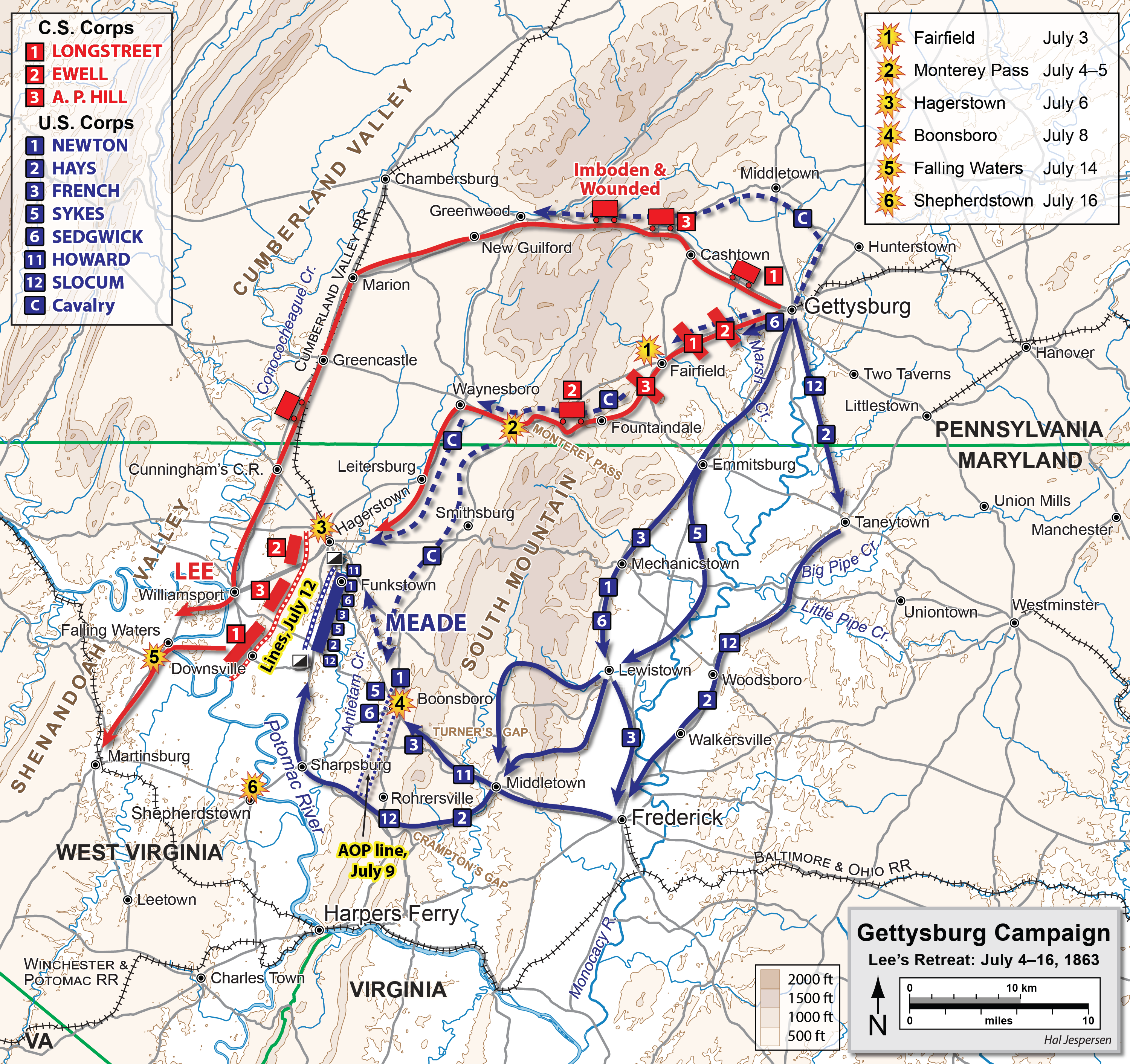|
Henry E. Noyes
Henry Erastus Noyes (August 23, 1839 – July 13, 1919) was a United States Army Officer who served during the American Civil War, American Indian Wars and Spanish–American War. Biography Henry E. Noyes was born in Belfast, Maine. He was appointed from Massachusetts to the United States Military Academy at West Point, and was a Cadet there from July 1, 1857, to June 24, 1861, when he was graduated and promoted in the Army to brevet second lieutenant, 2nd Dragoons on June 24, 1861. The regiment was redesignated the 2nd U.S. Cavalry on August 3, 1861. Civil War Service Noyes entered service during the American Civil War. He served in the defenses of Washington, D. C., from June 27 to July 16, 1861, and in the Manassas Campaign of July 1861. He fought at the Battle of Blackburn's Ford on July 18, 1861, and the Battle of Bull Run on July 21, 1861. Noyes then served in the defenses of Washington, D. C., from July to September 1861, the Port Royal Expedition of October to November ... [...More Info...] [...Related Items...] OR: [Wikipedia] [Google] [Baidu] |
Belfast, Maine
Belfast is a city in Waldo County, Maine, United States. As of the 2020 United States census, 2020 census, the city population was 6,938. Located at the mouth of the Passagassawakeag River estuary on Belfast Bay (Maine), Belfast Bay and Penobscot Bay. Belfast is the county seat of Waldo County. Its Port, seaport has a wealth of historic architecture in several historic districts, and remains popular with tourists. History The area was once territory of the Penobscot people, Penobscot tribe of the Abenaki people, Abenaki people, which each summer visited the seashore to hunt for fish, shellfish and seafowl. In 1630, it became part of the Muscongus Patent, which granted rights for English trading posts with the Indigenous peoples of the Americas, Native Americans, especially for the lucrative fur trading, fur trade. About 1720, General Samuel Waldo of Boston, Massachusetts, Boston bought the Muscongus Patent, which had evolved into outright ownership of the land, and was there ... [...More Info...] [...Related Items...] OR: [Wikipedia] [Google] [Baidu] |
Battle Of Secessionville
The Battle of Secessionville (or the First Battle of James Island) was fought on June 16, 1862, during the American Civil War. Confederate forces defeated the Union's only attempt to capture Charleston, South Carolina, by land. It is noted for the court martial of the Union brigadier general Henry Benham for trying to take James Island, which was against the orders given. ''American Civil War Society (UK)'' Prelude The importance of Charleston to the Confederate cause, after the Union implemented their , can be summarized in the words of Gen. Robert E. Lee, "The loss of Charleston would cut us off almost entirely from communications w ...[...More Info...] [...Related Items...] OR: [Wikipedia] [Google] [Baidu] |
Sioux Wars
The Sioux Wars were a series of conflicts between the United States and various subgroups of the Sioux people which occurred in the later half of the 19th century. The earliest conflict came in 1854 when a fight broke out at Fort Laramie in Wyoming, when Sioux warriors killed 31 American soldiers in the Grattan Massacre, and the final came in 1890 during the Ghost Dance War. First Sioux War The First Sioux War was fought between 1854 and 1856 following the Grattan Massacre, Grattan Fight. The punitive Battle of Ash Hollow was fought in September 1855. Dakota War of 1862 The Santee Sioux or Dakotas of Western Minnesota rebelled on August 17, 1862, after the Federal Government failed to deliver the annuity payments that had been promised to them in the Treaty of Traverse des Sioux of 1851. The tribe pillaged the nearby village of New Ulm, Minnesota, New Ulm and attacked Fort Ridgely. They killed over 800 German farmers, including men, women and children. After the Battle of Bir ... [...More Info...] [...Related Items...] OR: [Wikipedia] [Google] [Baidu] |
American Indian Wars
The American Indian Wars, also known as the American Frontier Wars, and the Indian Wars, was a conflict initially fought by European colonization of the Americas, European colonial empires, the United States, and briefly the Confederate States of America and Republic of Texas against various Tribe (Native American), American Indian tribes in North America. These conflicts occurred from the time of the earliest colonial settlements in the 17th century until the end of the 19th century. The various wars resulted from a wide variety of factors, the most common being the desire of settlers and governments for Indian tribes' lands. The European powers and their colonies enlisted allied Indian tribes to help them conduct warfare against each other's colonial settlements. After the American Revolution, many conflicts were local to specific states or regions and frequently involved disputes over land use; some entailed cycles of violent reprisal. As American pioneer, American settlers s ... [...More Info...] [...Related Items...] OR: [Wikipedia] [Google] [Baidu] |
Battle Of Selma
The Battle of Selma was fought on April 2, 1865 in Dallas County, Alabama during the American Civil War. It was part of the Union campaign through Alabama and Georgia, known as Wilson's Raid, in the final full month of the Civil War. Brevet Major-General James H. Wilson, commanding three divisions of Union cavalry, about 13,500 men, led his men south from Gravelly Springs, Alabama, on March 22, 1865. Opposed by Confederate Lieutenant-General Nathan B. Forrest, Wilson skillfully continued his march and eventually defeated him in a running battle at Ebenezer Church, on April 1. Continuing towards Selma, Wilson split his command into three columns. Although Selma was well-defended, the Union columns broke through the defenses at separate points forcing the Confederates to surrender the city, although many of the officers and men, including Forrest and Lieutenant-General Richard Taylor, escaped. Selma demonstrated that even Forrest, whom some had considered invincible, co ... [...More Info...] [...Related Items...] OR: [Wikipedia] [Google] [Baidu] |
Wilson's Raid
Wilson's Raid was a cavalry operation through Alabama and Georgia in March–April 1865, late in the American Civil War. U.S. Brig. Gen. James H. Wilson led his U.S. Cavalry Corps to destroy Confederate manufacturing facilities and was opposed unsuccessfully by a much smaller force under Confederate Lt. Gen. Nathan Bedford Forrest. Background and opposing forces After his victory at the Battle of Nashville, U.S. Maj. Gen. George H. Thomas and his Army of the Cumberland found themselves with virtually no organized military opposition in the heart of the Confederacy. Thomas ordered Brig. Gen. James H. Wilson (who commanded the Cavalry Corps of the Military Division of the Mississippi, but was attached to Thomas's army) to lead a raid to destroy the arsenal at Selma, Alabama, in conjunction with Maj. Gen. Edward Canby's operations against Mobile. Selma was strategically important as one of the few Confederate military bases remaining in Southern hands. The town contained an ... [...More Info...] [...Related Items...] OR: [Wikipedia] [Google] [Baidu] |
Battle Of Nashville
The Battle of Nashville was a two-day battle in the Franklin-Nashville Campaign that represented the end of large-scale fighting west of the coastal states in the American Civil War. It was fought at Nashville, Tennessee, on December 15–16, 1864, between the Confederate States Army, Confederate Army of Tennessee under Lieutenant General (CSA), Lieutenant General John Bell Hood and the Union Department of the Cumberland, Army of the Cumberland (Dept. of the Cumberland) (AoC) under Major general (United States), Major General George H. Thomas. In one of the largest victories achieved by the Union army during the war, Thomas attacked and routed Hood's army, largely destroying it as an effective fighting force. Military situation Hood followed up his defeat in the Atlanta Campaign by moving northwest to disrupt the supply lines of Maj. Gen. William T. Sherman from Chattanooga, Tennessee, Chattanooga, hoping to challenge Sherman into a battle that could be fought to Hood's a ... [...More Info...] [...Related Items...] OR: [Wikipedia] [Google] [Baidu] |
Third Battle Of Winchester
The Third Battle of Winchester, also known as the Battle of Opequon or Battle of Opequon Creek, was an American Civil War battle fought near Winchester, Virginia, on September 19, 1864. Union Army Major General Philip Sheridan defeated Confederate Army Lieutenant General Jubal Early in one of the largest, bloodiest, and most important battles in the Shenandoah Valley. Among the 5,000 Union casualties were one general killed and three wounded. The casualty rate for the Confederates was high: about 4,000 of 15,500. Two Confederate generals were killed and four were wounded. Participants in the battle included two future presidents of the United States, two future governors of Virginia, a former vice president of the United States, and a colonel whose grandson, George S. Patton, became a famous general in World War II. After learning that a large Confederate force loaned to Early left the area, Sheridan attacked Confederate positions along Opequon Creek near Winchester, Vi ... [...More Info...] [...Related Items...] OR: [Wikipedia] [Google] [Baidu] |
Battle Of Hagerstown
The Battle of Williamsport, also known as the Battle of Hagerstown or Falling Waters, took place from July 6 to July 16, 1863, in Washington County, Maryland, as part of the Gettysburg Campaign of the American Civil War. It is not to be confused with the fighting at Hoke's Run which was also known as the Battle of Falling Waters. During the night of July 4–July 5, Gen. Robert E. Lee's battered Confederate army began its retreat from Gettysburg, moving southwest on the Fairfield Road toward Hagerstown and Williamsport, screened by Maj. Gen. J.E.B. Stuart's cavalry. The Union infantry followed cautiously the next day, converging on Middletown, Maryland. By July 7, Brig. Gen. John D. Imboden stopped Brig. Gen. John Buford's Union cavalry from occupying Williamsport and destroying Confederate trains. On July 6, Brig. Gen. Judson Kilpatrick's cavalry division drove two Confederate cavalry brigades through Hagerstown before being forced to retire by the arrival of the rest of ... [...More Info...] [...Related Items...] OR: [Wikipedia] [Google] [Baidu] |
Battle Of Brandy Station
The Battle of Brandy Station, also called the Battle of Fleetwood Hill, was the largest predominantly cavalry engagement of the American Civil War, as well as the largest ever to take place on American soil. It was fought on June 9, 1863, around Brandy Station, Virginia, at the beginning of the Gettysburg Campaign by the Union cavalry under Maj. Gen. Alfred Pleasonton against Maj. Gen. J. E. B. Stuart's Confederate cavalry. Union commander Pleasonton launched a surprise dawn attack on Stuart's cavalry at Brandy Station. After an all-day fight in which fortunes changed repeatedly, the Federals retired without discovering Gen. Robert E. Lee's infantry camped near Culpeper. This battle marked the end of the Confederate cavalry's dominance in the East. From this point in the war, the Federal cavalry gained strength and confidence. Background The Confederate Army of Northern Virginia streamed into Culpeper County, Virginia, after its victory at Chancellorsville in May 18 ... [...More Info...] [...Related Items...] OR: [Wikipedia] [Google] [Baidu] |
Battle Of Fredericksburg
The Battle of Fredericksburg was fought December 11–15, 1862, in and around Fredericksburg, Virginia, in the Eastern Theater of the American Civil War. The combat between the Union Army, Union Army of the Potomac commanded by Major general (United States), Maj. Gen. Ambrose Burnside and the Confederate States Army, Confederate Army of Northern Virginia under General officers in the Confederate States Army#General, Gen. Robert E. Lee included futile frontal attacks by the Union army on December 13 against entrenched Confederate States of America, Confederate against a feature of the battlefield that came to be remembered as the 'sunken wall' on the heights overlooking the city. It is remembered as one of the most one-sided battles of the war, with Union casualties more than twice as heavy as those suffered by the Confederates. A visitor to the battlefield described the battle as a "butchery" to President of the United States, U.S. President Abraham Lincoln. Burnside planned to ... [...More Info...] [...Related Items...] OR: [Wikipedia] [Google] [Baidu] |







